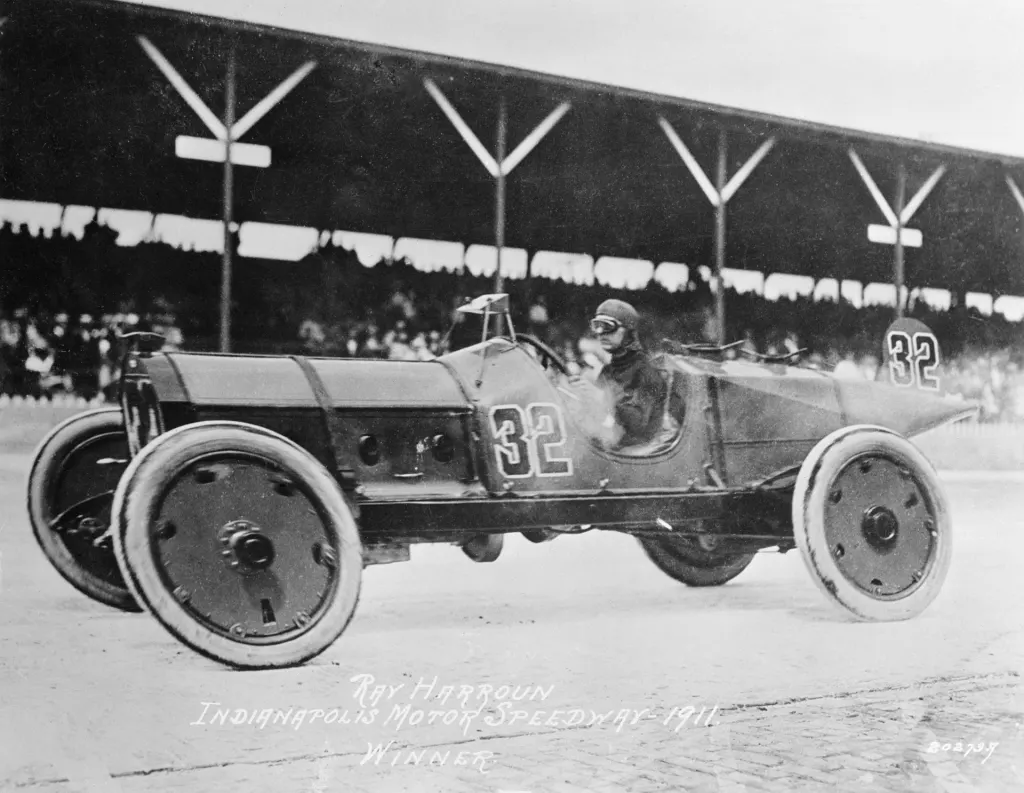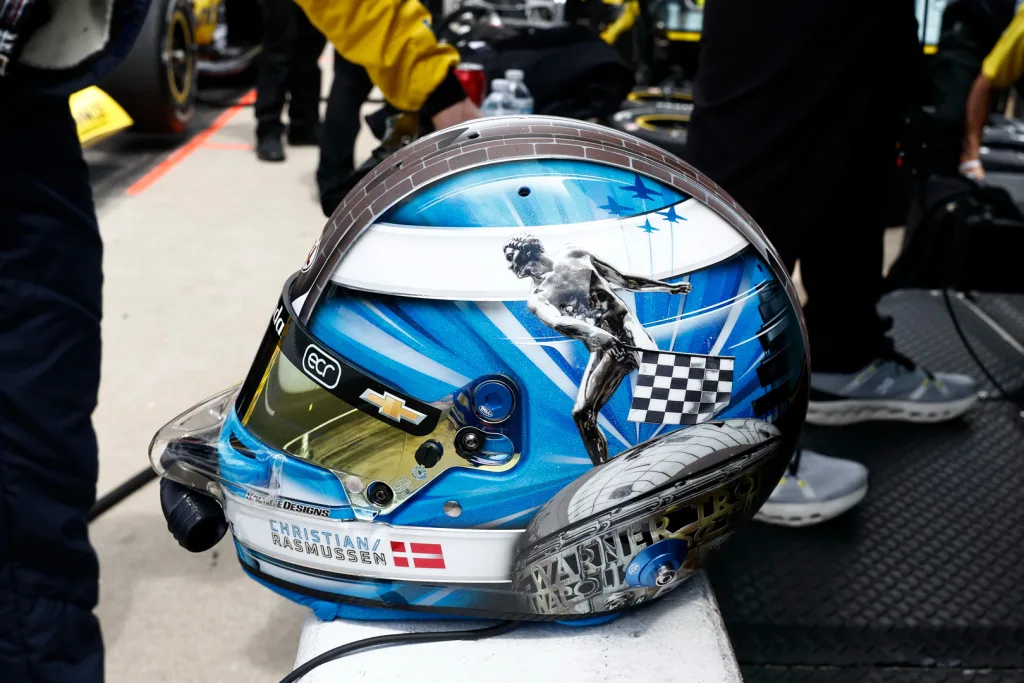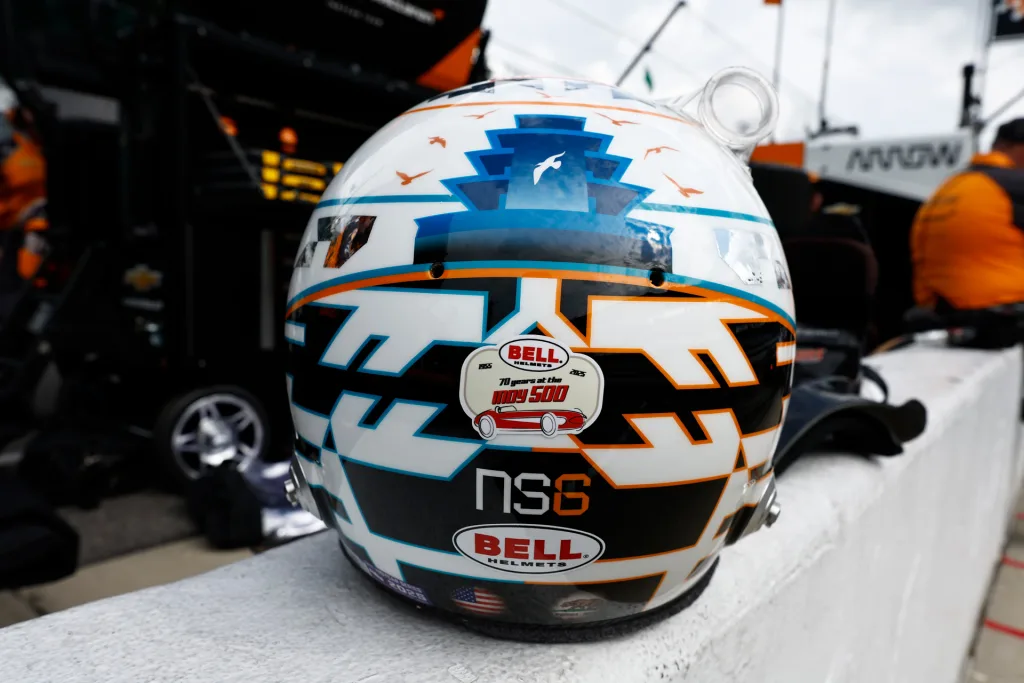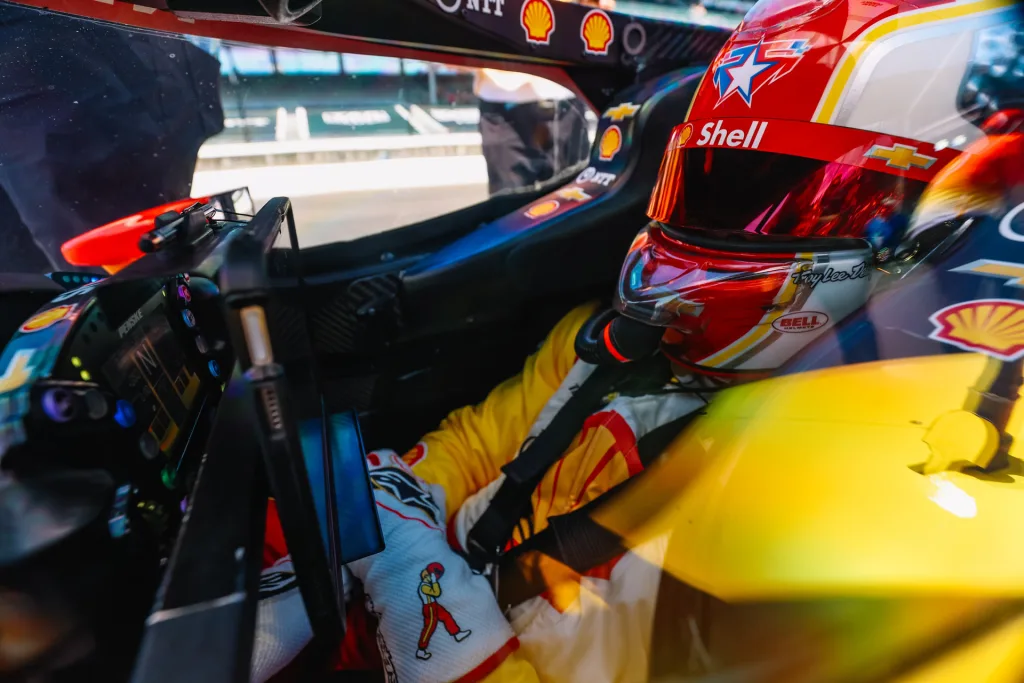If you describe it in phrases, the Indianapolis 500 may appear to be a boring watch: Vehicles go spherical and spherical an oval monitor 200 instances, totaling 500 miles over the course of some hours. However if you happen to had been a driver, you’d be having a hell of a distinct expertise. Suppose screaming speeds of 230 miles per hour, pulling 4 Gs on corners, with one’s reflexes and split-second selections drawing a skinny line between victory and tragedy . . . over the course of some hours.
It’s a degree of depth that TV networks have been attempting to carry viewers into for years with in-car cameras and issues like driver radio communiques. It has been working. Final 12 months, NBC—which lined the spectacle from 2019–2024—netted probably the most streams of the race ever and averaged 5.34 million whole viewers, up from 4.9 million in 2023 and 4.8 million in 2022. This 12 months marks FOX’s first time ever broadcasting it, they usually seemingly need that pattern to proceed, in order that they’re throwing all of the tech they’ve at it. And that features the modern, diminutive Driver’s Eye, dubbed the world’s smallest reside broadcast digital camera, which brings followers immediately into drivers’ helmets (fairly actually) like by no means earlier than. For the primary time in Indy 500 historical past, viewers may have a view of the race precisely as its stars see it from inside their helmets—from dramatic passes and vehicle-quaking jousts to the very mechanics of how they function their automobiles at such speeds.
“Driver’s Eye brings the human issue,” says Alex Miotto Haristos, COO of Racing Force Group, which owns the tech. “It brings the wrestle.”
And it might carry the rankings, too—particularly if it catches on within the collection prefer it has in Method 1.

MORE THAN MEETS THE EYE
The UK-born, Italy-raised Haristos is probably an unlikely creator of racing gear. He started his profession in administration consulting and later actual property earlier than buying an electronics firm and launching it as Zeronoise in 2018 with Stephane Cohen of Bell Racing Helmets. Haristos doesn’t come from a racing background, however moderately dubs himself a enterprise engineer who noticed it as a chance. He says he rapidly discovered himself falling down the rabbit gap right into a ardour venture given the sheer difficult nature of the Driver’s Eye tech, which they started creating in 2019.

That problem could be very actual once you’re engaged on a product meant to be inserted right into a race-car driver’s most crucial piece of security gear, notably in a sport the place mentioned driver’s head is protruding of the automobile. Racing helmets are modern design marvels that developed out of leather-based and material variations within the Indy 500’s early days to metal helmets in 1916. In response to IndyCar, each driver has a main and one or two backups, they usually’re all custom-fit and produced per FIA (Federation Internationale de l’Automobile) standards. (Wish to purchase your individual? Haristos says that’ll price you between $5,000 and $8,000.) The outer shell options ultralight carbon fiber; there’s a fireproof liner; a built-in airbag to help in helmet elimination with out neck pressure; quite a few parts to make sure most aerodynamics in 200+ mph runs; and audio insulation so drivers can talk with their groups over the roar of 33 engines on the monitor.
“Your job is to not alter any function of the helmet,” Haristos says. “The helmet you don’t contact. You must work with what you’ve got, and you need to handle to combine the whole lot seamlessly. That is the trick.”

The staff got down to seize precisely what a driver was seeing on the racetrack, uncooked and unfiltered, shakes and all—and rapidly understood that they couldn’t work on the outer floor of a helmet as a result of it might be a security problem. So that they homed in on the facet padding of the helmet that Haristos says is round a centimeter away from the attention, which, given the delicate proximity, went by the FIA for approval, as properly. The group mandated a minuscule measurement and weight for the digital camera, so moderately than beginning with what picture high quality they wished to realize and so forth, “We began working backwards. And at first it was like, No, that is inconceivable.”
Finally, the staff needed to break aside digital camera design as we all know it—a single unit—and separate the inner techniques to make it work. They stripped out the whole lot they may for what wanted to go within the helmet, and had been left with a tiny sensor with the power to seize high-res video (within the case of the Indy 500, in 1080p, 60fps) within the smallest of actual property. At the moment, that unit clocks in at 8.8 x 8.8 mm, and weighs lower than a dime. Then, they moved the remainder of the digital camera’s guts to the automobile itself. Which can also be a feat, notably in Indy racing, which entails older automobiles which might be already stuffed to the max from additions through the years.
“You possibly can’t do one factor with out affecting one other,” says Michael Davies, FOX EVP of subject and technical administration and operations. “There’s no change which you can make on a automobile that doesn’t fuck one thing else up. And I’m all the time reminded of one thing a really good man mentioned, which is that once you remedy an issue, you inevitably create one other one, however you will need to be sure that the issue you create is smaller than the one that you simply solved.”
Haristos says that for Indy, they had been informed that the one obtainable area was on the facet of the automobile by the radiator—not a super spot, given the excessive temperature and so forth. So that they needed to develop a {custom} housing that was extra environment friendly and will function at a better temp whereas nonetheless becoming into the tightest of areas.
Finally, from the helmet digital camera to the housing, it was essential that the additions all felt seamless to the driving force.
“Consolation in motorsport interprets into confidence,” Haristos says. “Confidence interprets into efficiency.”

CROSSING THE POND
Security gear producer OMP Racing acquired Zeronoise in 2019—they usually additionally acquired Bell, a significant purveyor of helmets to Method 1 and the Indy 500, with 23 of the 33 drivers donning its headwear for the latter. (All of the manufacturers would finally coalesce underneath the newly shaped Racing Pressure Group in 2021; final 12 months, it did $74.1 million in revenue, up 4.8% from 2023.)
After they developed the primary iteration of Driver’s Eye, the staff acquired it into Method E racing in 2020, and was capable of finalize the event of the tech, testing it in Method 1 in 2021—and giving race fanatics a brand new, visceral strategy to expertise the game. It gained floor, and in 2023 turned mandatory in Method 1.
FOX examined Driver’s Eye in some NASCAR races that very same 12 months, and now on Sunday you’ll have the ability to watch the Indy 500 from the angle of 2023/2024 winner Josef Newgarden, Scott Dixon, Alex Palou, Will Energy, Marcus Ericsson and Felix Rosenqvist.

After all, there’s extra tech wizardry at play behind the scenes than merely hooking up a digital camera. The Driver’s Eye is mounted in a darkish helmet with an enormous underexposure—and the monitor is an enormous overexposure. Drivers race with completely different filters and colours on their visors, which they’ll tear off in layers periodically all through the race as they get soiled. Furthermore, the Indy 500 is hours lengthy, there are various climate eventualities, the solar and shadows are transferring, and the whole lot could be very a lot in a state of flux. Haristos says Driver’s Eye compensates for all of it, from white steadiness to the various visor colours, with a mixture of computerized and guide controls, making for a seamless sync with the remainder of this system. (Which, let’s be trustworthy, is vital—a director has to use the pictures, lest Driver’s Eye be rendered out of date.)
From a manufacturing standpoint, FOX’s Davies says that for the reason that system permits for a view of drivers’ fingers on the controls and precisely what they’re in any given second, it’s additionally a boon to race commentators, who’ve informed him that’s it’s probably the most helpful angle for them in with the ability to craft a story round what’s occurring on the monitor. Furthermore, he says the uncooked nature of the footage actually exhibits the athleticism at play on the a part of the drivers, one thing that may get misplaced in conventional pictures.
“We will actually cowl the occasion from the within out, as an alternative of the surface in,” he says.
And on prime of that, he provides, it’s one thing sponsors like—and request. Thus a bevy of IndyCar racing’s family names. now driving with the cameras embedded of their helmets.
The Driver’s Eye is only one tiny software in FOX’s arsenal, which appears designed to shock and awe—and plant a flag of their tackle the race. For the primary time, reside drones will likely be deployed, together with {custom} high-speed FPV drones; there are greater than 100 cameras in play, 108 mics, 16 in-car cameras providing views of drivers’ faces and cockpits, and extra (together with 5.1 encompass sound “that’ll blow your head off”).
“We’re taking part in some fairly large hits right here and searching ahead to seeing the way it enhances the large race,” Davies says. “You possibly can see it in a very completely different method—even if you happen to’ve watched Indy for so long as it’s been on TV.”


